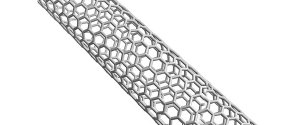Oct 15 2009
Carbon nanotubes hold promise for delivering medicine directly to a tumor; acting as sensors so keen they detect the arrival or departure of a single electron; replacing costly platinum in fuel cells; or as energy-saving transistors and wires, but building them with the right structure has been a challenge.
 Carbon nanotubes are cylindrical carbon molecules whose novel properties make them useful for applications in chemical engineering, nanotechnology, electronics and other areas.
Carbon nanotubes are cylindrical carbon molecules whose novel properties make them useful for applications in chemical engineering, nanotechnology, electronics and other areas.
Now, two Case Western Reserve University researchers have found that mixing different metals in a catalyst can help determine the tubes' structure and function, or chirality.
"We have established a link between the structure of a catalyst and the chirality of carbon nanotubes," said R. Mohan Sankaran, an assistant professor of chemical engineering at the Case School of Engineering. "Change the catalyst structure by varying its composition, and you can begin to control the chirality of the nanotubes and their electrical and optical properties."
Nanotubes are normally grown in bulk mixtures. When using a nickel catalyst, typically one-third of those grown are metallic and could be used like metal wires to conduct electricity. About two-thirds are semiconducting nanotubes, which could be used as transistors, said Wei-Hung Chiang, who received his doctorate in chemical engineering in May. But separating them according to properties is "costly and can damage the nanotubes," Chiang said.
Better to make what you want.
Chiang and Sankaran found that a mixed iron and nickel catalyst could change the outcome. Of the compositions tested, a catalyst of 27 percent nickel and 73 percent iron produced the most dramatic result: the majority of the nanotubes were semiconducting. The researchers are now working on assessing the purity and integrating the nanotubes into thin film transistors.
Chiang and Sankaran say their findings open the door to experimenting with other elements as catalysts and different combinations, which may produce near-pure nanotubes with desired properties. Their findings appear in a letter published Sept. 20 in the online edition of Nature Materials.